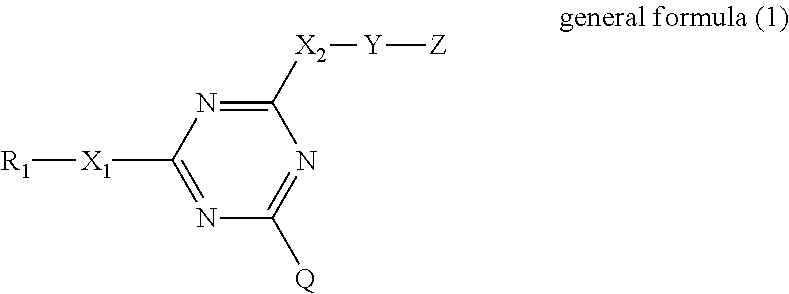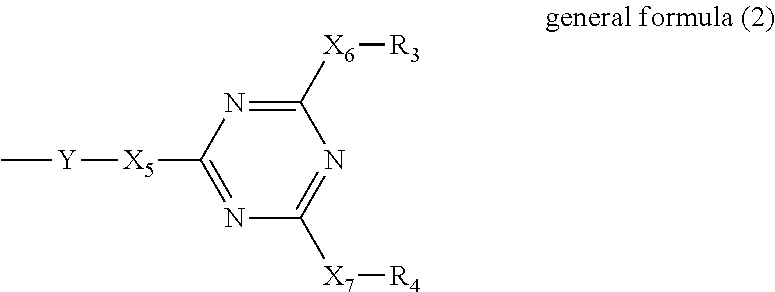Composition for battery
a battery and composition technology, applied in the field of composition for batteries, can solve the problems of affecting the inability to obtain adequate battery performance if used alone, and the inability to uniformly mix carbon materials having superior electroconductivity (electroconductive assistants), so as to improve the overall battery performance of a lithium secondary battery, improve the wettability of an electrode, and improve the overall battery performan
- Summary
- Abstract
- Description
- Claims
- Application Information
AI Technical Summary
Benefits of technology
Problems solved by technology
Method used
Image
Examples
examples
[0137]Although the following provides a more detailed explanation of the present invention based on the following examples, the present invention is not limited by these examples. In the examples, parts refer to parts by weight while % refers to percent by weight. A dynamic scattering type of particle size distribution analyzer (“MicroTrack UPA” manufactured by Nikkiso Co., Ltd.) was used to measure particle size distribution of carbon dispersions, and the resulting volumetric particle size distributions were used to determine the particle diameter that yields a value of 50% when calculated as the volume ratio of the particles starting with those having a small particle diameter (D50). However, the particle size distribution of carbon dispersions using carbon nanofibers for the electroconductive assistant was determined by evaluating with a grind gauge (in compliance with JIS K5600-2-5). In addition, the particle size distributions of electrode composite pastes were also determined ...
examples 1 and 2
[0172]After kneading 90 parts of a positive electrode active substance in the form of lithium cobalt oxide LiCoO2 (HLC-22, mean particle diameter: 6.6 μm, specific surface area: 0.62 m2 / g, manufactured by Honjo Chemical), 4.75 parts of a binder in the form of polyvinylidene fluoride (KF Polymer, manufactured by Kureha) and 21.9 parts of solvent in the form of dimethylsulfoxide or dimethylformamide with a planetary mixer, 50 parts of any of the previously prepared carbon dispersions (carbon content: 5 parts) were added followed by kneading to obtain a positive electrode composite paste. The carbon dispersions used in each of the examples are shown in Table 7.
examples 3 to 26 and 29
and Comparative Examples 5, 6 and 8
[0173]After kneading 90 parts of a positive electrode active substance in the form of lithium cobalt oxide LiCoO2 (HLC-22, mean particle diameter: 6.6 μm, specific surface area: 0.62 m2 / g, manufactured by Honjo Chemical), 4.75 parts of a binder in the form of polyvinylidene fluoride (KF Polymer, manufactured by Kureha) and 21.9 parts of solvent in the form of N-methyl-2-pyrrolidone with a planetary mixer, 50 parts of any of the previously prepared carbon dispersions (carbon content: 5 parts) were added followed by kneading to obtain a positive electrode composite paste. The carbon dispersions used in each of the examples and comparative examples are shown in Tables 7 to 9.
PUM
| Property | Measurement | Unit |
|---|---|---|
| particle diameter | aaaaa | aaaaa |
| relative permittivity | aaaaa | aaaaa |
| donor number | aaaaa | aaaaa |
Abstract
Description
Claims
Application Information
 Login to View More
Login to View More - R&D
- Intellectual Property
- Life Sciences
- Materials
- Tech Scout
- Unparalleled Data Quality
- Higher Quality Content
- 60% Fewer Hallucinations
Browse by: Latest US Patents, China's latest patents, Technical Efficacy Thesaurus, Application Domain, Technology Topic, Popular Technical Reports.
© 2025 PatSnap. All rights reserved.Legal|Privacy policy|Modern Slavery Act Transparency Statement|Sitemap|About US| Contact US: help@patsnap.com



